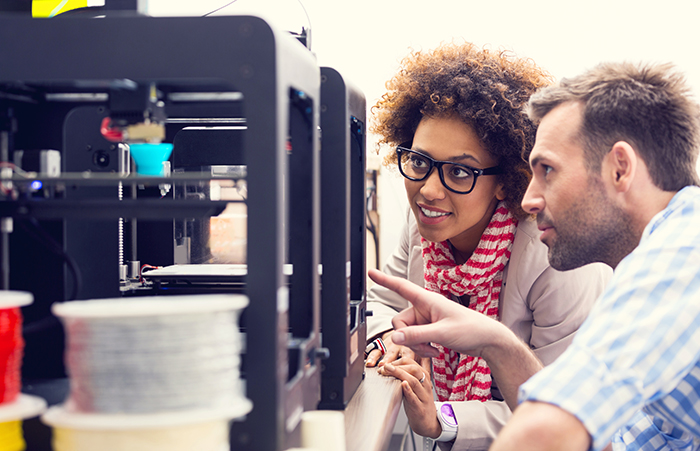
3D printing is becoming increasingly popular, so we’ll look at the advantages, the disadvantages, and the future of this burgeoning technology.
CLA can help identify if 3D printing can help streamline your production.
3D printing is a rapidly growing technology that many consider to be the future of custom manufacturing. However, that was not always the case. When 3D printing was introduced decades ago, it was seen as a slow, gimmicky technology with no real-world use. It was occasionally used for design and prototyping, but was never viewed as a viable option for most companies’ manufacturing floors. Nonetheless, in the last 10 years the technology has taken off, garnering large investments from many of the top manufacturers in the world.
3D printing overview
3D printing, also called additive manufacturing or additive layer manufacturing, is the process of building a three-dimensional object from scratch, one layer at a time. It generally starts with a digital, 3D model of the component to be manufactured. This model is digitally “cut” into many extremely thin slices by the software. The thickness of the slices depends on the shape of the product and type of material to be used.
Raw material is then loaded into the machine, generally in the form of powder or pellets. Plastic is the most commonly used substance, but certain types of metal (aluminum, titanium, stainless steel, and others) may also be used. The raw material is heated to its melting point and placed onto the work surface by the machine, one layer at a time, until the product has been fully printed.
The advantages of 3D printing
Unprecedented design freedom: 3D printing gives manufacturers the ability to produce components of extreme geometric complexity that either can’t be made — or are very difficult to make — with traditional manufacturing techniques.
Minimal waste: In most cases, the only material needed to print a product is that which is used in the finished product. Excess material is almost nonexistent, and any leftover material can be reused or recycled. This also results in cost savings to the manufacturer.
Single-step manufacture: During the building phase of 3D printing, the machine runs independently of the machine operator. One operator can run multiple printers at one time, which results in lower labor costs. There is also reduced dependence on other traditional manufacturing processes, such as machining, milling, and welding, since the entire production process takes place on one machine. This one machine has a much smaller physical footprint on the manufacturing floor and can cut down production times significantly.
The disadvantages of 3D printing
Machine cost: 3D printers are still relatively expensive when compared with other traditional manufacturing machines. Depending on the size of the machine, functionality of the machine, and type of raw materials to be used, 3D printers can cost anywhere from $10,000 to $100,000 or higher. There can also be long lead times when purchasing 3D printers, as many have to be custom-made to fit the needs of each manufacturer. The cost to run the machine can be higher than traditional machinery, too, as 3D printers use more energy than traditional manufacturing equipment.
Materials considerations: The cost of materials is generally the largest cost component of 3D printing. The current state of 3D printing technology limits the types of materials that can be used to only certain types of plastics and metals. Many times, the materials used in 3D printing are more expensive than those used with traditional, subtractive manufacturing techniques.
Speed: Many 3D printers currently in operation are still relatively slow when compared with other manufacturing processes. This limits 3D printing’s ability to compete in the mass-production space.
The future of 3D printing
In the future, many of the “disadvantages” of 3D printing will be reduced or eliminated completely. As the technology becomes more widespread and competition and innovation increase, the cost of 3D printers will decrease. New printers will be able to accommodate more types of materials, and the cost of those materials will decrease. Machines will also become faster, and jobs that currently take days or weeks will instead be completed in hours or even minutes.
In the coming years, 3D printing will continue to evolve and will change the landscape of manufacturing. It will be at the heart of custom manufacturing and will be used in full-scale production across many other industries, such as automotive, aerospace, health care, and more.
Many of the world’s largest manufacturers have already invested heavily in 3D printing technology and they are reaping benefits in the form of millions of dollars of cost savings. Children are studying 3D printing in schools and are learning how to operate hardware and design software with the technology.
How we can help
3D printing is the future of manufacturing, and its impact is already being felt around the globe. CLA’s professionals are passionate about improving the competitiveness of the U.S. manufacturing and distribution industries. We can help you assess your current manufacturing operations and identify whether 3D printing could help streamline your production.
Contact Us